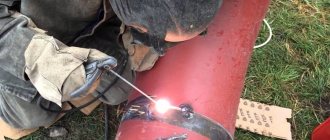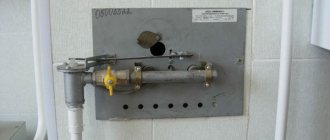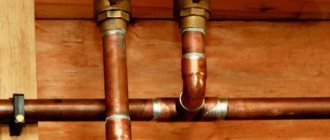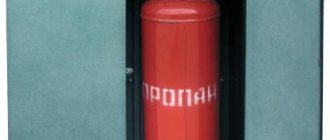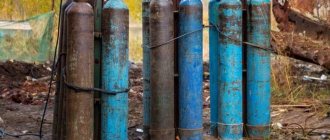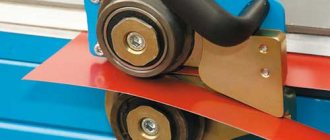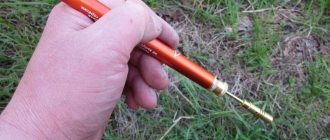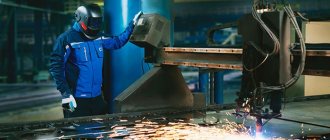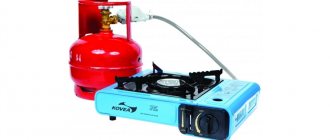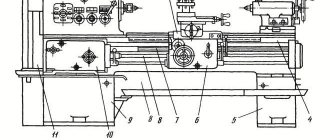| Place | Name | Characteristics in the rating |
| The best gas cutters for metal |
| 1 | Krass Р3П-300 | The best choice |
| 2 | REDIUS Р2А-01М | Lightweight design |
| 3 | DONMET RK Vognik 182 | Universal plasma torch |
| 4 | KEDR R3P-05 1390036 | Long design |
| 5 | Svarog RZ 62-3F 1C005-0012 | Best Lever Blow Cutter |
| Best Handheld Metal Cutters |
| 1 | Pathfinder-GTP-S05 | Best manual cutter |
| 2 | Campingaz Chalugaz profile | Most comfortable handheld design |
| 3 | Kovea KT-2008 | Convenient cutter for small jobs |
| 4 | Pathfinder GTP-R03 | Compact tool |
| 5 | Kovea KT-2911 Long Canon | Hand torch with extended nozzle |
There are many ways to cut metal, but the most effective, simple, and, oddly enough, safe is the gas method. The essence of the technology is based on the chemical interaction of flammable gas, in most cases propane, with oxygen. As a result of this synthesis, a directed flame is formed with a high temperature in the center, which reaches the melting point of steel.
A more modern method is plasma cutting. The technology is similar, only an electric arc acts as the jet activator. A plasma cutter is capable of creating a thinner cut, but if in the case of propane it is enough to acquire only two gas cylinders (with propane and oxygen), then you will need a special device - a plasma torch.
When choosing a cutter, you should first of all pay attention to its ergonomics and convenience. Typically, the cutting process takes many hours, and some places are very difficult to reach. The design of the cutter is selected individually, depending on the tasks assigned. We also look at the safety of the tool, but if we talk about our rating, which includes the 10 best cutters, then this parameter is present in all models, regardless of their price category.
The best gas cutters for metal
A gas cutter consists of several modules: a holder, a valve system, tubes and a nozzle. Each model has its own characteristics. For example, the nozzle should be equipped with kickback protection, and the handle should fit comfortably in the hand and not slip out. When choosing, special attention is paid to the valve system, which bears the main load during operation. The location of the valves also matters in terms of convenience, and in some models the purge valve is replaced with a lever. Such tools are also presented in our rating.
Types of portable cutters
A portable gas cutter is a fairly simple design. The principle of operation is the creation of a directed jet of flame by mixing oxygen and flammable gas. The cutter is based on a cylinder and a burner that is attached to it. According to the type of fuel supply, portable cutters are divided into:
- Injection
- Injectorless.
The main advantage of injection-type cutters is their high combustion temperature. The main advantage of injection-free cutters is their high mobility and simplicity of design.
Important: Cutters can also be divided according to the type of fuel used. There is no narrow list here. There are devices running on acetylene, kerosene, and gasoline. But butane is most often used. For portable cutters, ready-made disposable cylinders with a collet clamp are sold.
Injection portable cutters
An injection-type burner requires the presence of two cylinders - oxygen and a cylinder with flammable gas. Cylinders have a capacity from 2 to 5 liters. The mechanism for starting the injector is as follows:
- Combustible gas is supplied under high pressure through a twin tube
- Oxygen is supplied in the same way
- The gas mixed in a special chamber, without losing its initial speed, escapes from the nozzle
- Using an external source, or through a built-in piezoelectric element, a spark is supplied
The mobility of the injection burner is not high. The design of two cylinders is quite cumbersome. However, these burners are designed to be carried by one person.
Important: To choose a durable mini injection cutter, pay attention to the material of the outer mouthpiece. According to GOST requirements, the nozzle is made of chromium bronze or copper. Some manufacturers do not comply with the requirements and make nozzles from brass. Such nozzles have a shorter service life.
Injectorless portable burners
A gas collet is one of the cheapest tools for gas welding. It consists of a gas cylinder with a capacity of up to 0.5 liters, to which a burner with a nozzle is attached through a collet connection. The advantages of the device are:
- Highest mobility. The entire structure weighs no more than 700 grams. No special containers or bags are needed for carrying.
- Versatility. In addition to their direct functions, such burners are used for heating car locks, as a blowtorch, etc.
- Ease of use. There is no need to fine-tune the fuel supply to the nozzle. To get started, just click the button with the piezoelectric element.
There are also quite a lot of disadvantages. The main ones include:
- The flame goes out easily. The injector-less design does not involve active oxygen supply. The strong flow of compressed propane creates an unstable jet of flame that is easy to knock down.
- High operating costs. Consumption is about 200 ml. gas per hour of work. Those. even the largest cylinder will be discharged after 2.5 hours of operation.
- Relatively low combustion temperature. Although mini-cutters heat up to 1300 degrees, they cannot compete with their injection counterparts. The gas exit velocity, as well as the efficiency of the mini-cutter, is lower.
Mini-burners, even similar in appearance, differ significantly both in flame quality and design solutions. For example, a mini gas cutter from KOVEA Fire-Z Torch is manufactured on a collet connector and has an operating temperature of up to 1500 degrees. And the HecatonTorch KT-2610 burner from the same company produces a flame of up to 2500 degrees.
Additionally, the Fire-Z Torch uses a collet connection for disposable cylinders, while the HecatonTorch uses a US thread. If you need a portable blowtorch with advanced functionality for the garage, it is better to purchase the first option. And if you consider the torch as a professional tool, it makes sense to overpay 1000 rubles and buy HecatonTorch with a US connection
DIY mini autogen
Carrying out gas cutting or gas welding work requires not only careful adherence to safety precautions, but also specialized equipment: an autogen, also commonly called a gas torch or a gas cutter, will help perform work of varying complexity quickly, efficiently, and professionally. In the article you will learn about the operating principle and classification of this tool.
Gas cutting using autogen is a very common procedure, which is based on the property of metal to heat up under the influence of high temperatures, which makes it easy to cut it in the desired direction. The main areas of application of autogens are installation and construction work - both professional (industrial) and household; To perform welding, in addition to the autogen, a filler rod is required.
Ultra-portable torches for small jobs
The class of ultra-portable torches is useful where small welding and soldering are needed without the ability to connect electrical appliances. Such burners are powered by liquid gas for refilling lighters and are divided into 2 groups:
- With a cylinder for a collet connector and with a high pressure hose
- With built-in fuel tank
A portable gas cutter with a hose is a compact version of a mini-torch for a collet connector. A special feature is that the burner is mounted on a hose. Thanks to this, the cylinder can be placed in a backpack behind your back, and a light nozzle the size of a standard soldering iron will remain in your hands. An example is KT-2202 from KOVEA. The weight of the device without a cylinder is 140 grams, and the maximum temperature, as in larger devices, is up to 1300 degrees.
Since small work does not require large fuel costs, manufacturers often equip burners with a built-in fuel tank. The weight of an unfilled device usually does not exceed 50 grams, and the volume of the fuel tank is up to 100 ml.
Manual compact burners with a built-in fuel tank are used in the following areas:
- Soldering of radio components. They can be used as a soldering iron or a soldering iron. To do this, a nozzle with a tinned tip is attached to the outlet hole. Such burners have high heat output. Therefore, they are suitable for working with large parts.
- Work in conditions of lack of electricity. A compact pocket gas cutter is useful at a construction site if the wiring in the house under construction is not installed and it is impossible to use an electric soldering iron. Also, they are popular when installing cable networks, because... eliminate the need for the engineer to route power to the roof.
- Working in the cold . Using the torch as a soldering iron is convenient when working at low temperatures, because... the burner quickly heats the space around the soldering area, which greatly facilitates the process.
There are quite a lot of cheap hand torches from China in online stores. Because The design is simple, many people do not dare to overpay for famous brands. If you want to buy a Chinese burner, it is better to do it in a store where you can immediately check its operation. A common defect in cheap burners is gas leakage at the connecting points. Even if we do not take into account the obvious danger of such products, the constant loss of butane will not allow storing the burner charged for a long time.
Autogen. how to cut metal with gas? — Tool Master
Gas cutting seems to be a simpler process than gas welding work, and therefore even a person who does not have special skills can cope with it. For this reason, almost any of us can master working with a cutting torch.
The main thing here is to understand the essence of gas cutting technology. In modern conditions, propane cutters are increasingly used.
Working with them requires the use of both propane and oxygen, since the combination of such substances provides the maximum combustion temperature.
Advantages and disadvantages
Cutting metal with propane has a number of advantages , among which are the following:
- Gas cutting is in demand in situations where there is a need to cut metal of considerable thickness or create products according to templates that require the production of a curved cut that cannot be made with a grinder. You also cannot do without a gas cutter even when faced with the task of cutting out a disk from thick metal or making a blind hole of 20-50 mm.
- A gas cutter is a very easy-to-use tool and is lightweight. All home craftsmen who have experience working with gasoline models are aware of the inconveniences associated with large weight, size and noise. In addition to the fact that vibration creates significant inconvenience, the operator is forced to provide serious pressure during operation. Gas models seem to be a more attractive alternative due to the absence of all the above-mentioned disadvantages.
- Using metal cutting with gas allows you to speed up the work by 2 times, which cannot be done using a device equipped with a gasoline engine.
- Among most gases, including gasoline, propane has a lower price. For this reason, it is better suited for carrying out a significant amount of work, for example, if there is a task of cutting steel into scrap metal.
- When using propane cutting, it is possible to create a narrower cut edge than when working with acetylene cutters. At the same time, the method under consideration allows you to create a cleaner cut than what can be done using gasoline torches or a grinder.
Among the disadvantages that propane cutters have, only one should be highlighted: they can be used only for a limited range of types of metals . They are suitable for cutting exclusively low and medium carbon steels, as well as ductile cast iron.
Features of use
Such tools are not suitable for cutting high-carbon steels for the reason that they have a fairly high melting point, which is almost the same as the flame temperature.
This leads to the fact that instead of the release of scale, which looks like a column of sparks, from the back side of the sheet, it mixes with the molten metal along the edges of the cut.
As a result, oxygen cannot reach the thickness of the metal, which is why it fails to burn through the material.
Difficulties when cutting cast iron are created by the shape of the grains , as well as the graphite between them. True, this does not apply to malleable cast iron. It is impossible to solve the problem if you have to deal with aluminum, copper and their alloys.
It is important to dwell on the following point: the category of low-carbon steels is represented by grades from 08 to 20G, medium-carbon steels - grades from 30 to 50G2. A characteristic feature of carbon steel grades is the presence of the letter U in front of their names.
Necessary equipment
As with any other work, even before you start cutting metal with gas, you should prepare the necessary equipment:
- Cylinder with propane and oxygen - 1 pc.;
- High pressure hoses;
- Cutter;
- A mouthpiece that must have certain dimensions.
A prerequisite is the presence of a reducer on all cylinders, with which you can adjust the gas supply. It should be remembered that the propane tank has a reverse thread, which is why it will not be possible to screw an additional reducer onto it.
In general, gas equipment for cutting metal has a similar design, regardless of the manufacturer. There are three valves in the design
- the first provides propane supply;
- the second valve allows you to change the oxygen supply;
- The last one is the cutting oxygen valve.
Oxygen valves are usually marked with blue markings, while propane valves are usually marked with red or yellow markings.
Metal cutting is ensured by a jet of hot flame acting on the metal, which is created using a cutter. When it is turned on, propane and oxygen are mixed in a special mixing chamber, which leads to the appearance of a flammable mixture.
Using a propane cutter, you can cut metal whose thickness
does not exceed 300 mm .
The detailed installation is completed with elements that are mostly replaceable. For this reason, if one or another part fails, it will not be difficult for the operator to carry out repairs directly at the workplace. Particular care should be taken when choosing a mouthpiece. The key parameter to pay attention to is the thickness of the metal. If you have to deal with an object that includes elements of different thicknesses ranging from 6 to 300 mm, then you will have to prepare mouthpieces with internal numbers from 1 to 2, and external numbers from 1 to 5.
Preparing for work
Even before starting gas cutting, it is necessary to inspect the device to make sure that the propane cutter is in working condition. Next you need to perform the following operations:
- Preparing the cutting machine begins with connecting the hoses to it. Even before attaching the hose, it is purged with gas - this will remove debris and dirt from it.
- The oxygen hose must be connected to a fitting with a right-hand thread; a nipple and a nut are used for this purpose. As for the hose through which propane will flow, it is attached to a fitting with a left-hand thread. Before connecting the hose with gas, it is imperative to find out whether there is suction in the cutter channels. This problem can be solved by connecting an oxygen hose to the oxygen fitting, making sure that the gas fitting remains free.
- Next, you will need to set the oxygen supply level to 5 atmospheres, after which you need to open the valves that regulate the flow of gas and oxygen. Touch the loose fitting with your finger - this way you will know that there is an air leak. If it is missing, you will have to clean the injector and blow out the cutter channels.
- After this, you need to make sure that the detachable connections are airtight. If a leak can be detected, it is eliminated by tightening the nuts or replacing the seals. You should also make sure that the fastenings of the gas reducers are sufficiently tight and whether the pressure gauges are in working condition.
Let's get started
First, you need to move the oxygen reducer to the position corresponding to 5 atmospheres, the gas reducer to 0.5 . You also need to make sure that each valve is in the closed position.
After that, you need to take a propane torch and open the propane slightly, and then light it.
The cutter nozzle must be positioned so that it rests on the metal, after which you need to slowly open the oxygen control.
Next, you should adjust these valves one by one, thereby ensuring the required flame supply force. During such a setup, you need to sequentially open gas, oxygen, gas, oxygen.
When choosing the flame strength, you need to focus on the thickness of the metal. As the thickness of the sheet increases, the strength of the flame will have to increase, which will lead to an increase in the consumption of oxygen and propane. After adjusting the flame strength, you can start cutting metal.
The nozzle must be held in relation to the edge of the metal so that it is removed from the object being cut at a distance of 5 mm, and it itself must be located at an angle of 90 degrees. In some cases, it may be necessary to cut through the sheet or product in the center .
In this case, the starting point is chosen to be the place from which the cut will go.
The essence of the procedure is to heat the top edge to a temperature of 1000-1300 degrees Celsius. The exact temperature is determined taking into account the metal.
In practice, such work will look like the surface appears to be “wet.” The heating itself will take no more than 10 seconds.
After waiting for the metal to ignite, you need to open the cutting oxygen valve, after which a powerful, narrowly directed jet will begin to flow.
Cutting Features
When opening the valve of a propane cutter, do not rush. In this case, the ignition of oxygen will occur naturally as a result of interaction with the heated metal.
By acting this way, you will eliminate the risk of a flashback of the flame, during which you may see a pop. It is necessary to slowly guide the oxygen stream strictly parallel to the given line.
Here it is important not to make a mistake with the angle of inclination.
First, it is maintained at 90 degrees, after which it is necessary to create a slight deviation of 5-6 degrees in the direction opposite to the movement of the cutter.
If you have to deal with metal whose thickness is more than 95 mm, then it is allowed to increase the deviation to 70 degrees.
After the cut in the metal reaches 15-20 mm, the angle of inclination begins to increase to 20-30 degrees.
Nuances of metal cutting
When cutting metal, it is important to maintain the required speed . Its selection is carried out visually, for which the speed of scattering of sparks is assessed.
If the speed turns out to be optimal, then the stream of sparks will fly out at an angle of about 88-90 degrees relative to the surface being cut.
In a situation where the flow of sparks tends to be in the direction opposite to the movement of the cutter, we can conclude that the cutting speed is set too low.
In some cases, the stream of sparks is emitted at an angle of less than 85 degrees. This is a clue that the current cutting speed is too high.
When cutting with gas, it is important to take into account such a parameter as the thickness of the metal. If it is more than 60 mm, then it is advisable to place the sheets at such an angle that the slag easily moves to the side.
If you have to work with metal that has a significant thickness, then a special approach must be used. It is unacceptable to move the cutter until the metal is cut to its full thickness.
As cutting is completed, it is important to gradually reduce the advance speed and maintain the torch angle 10-15 degrees higher . The cutting procedure itself should be carried out in such a way that there are no significant pauses during it.
If it happened that you had to stop at a certain area, then you do not need to return to cutting at the point at which the work was interrupted. It starts all over again, and a new starting point is chosen.
After finishing cutting, you need to turn off the supply of cutting oxygen, after which the same is done with the regulating oxygen. The final action should be to turn off the propane.
